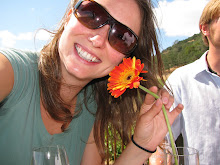“Warrior Women and Women Chiefs”
This chapter began with an introduction on how European men first viewed Native American women; either as objects of forbidden desire or as repulsive or both. Also, the author points out that many of the “histories” of native women have been altered to make them seem more “white” such as the story of Pocahontas. He then goes on to describe how some tribes, like the Mohave, had many genders even with in the category of the female sex. With in every tribe that had female berdaches, there were also male berdaches. The only region where there is hard evidence of female berdaches is west of the Rocky Mountains. Female berdaches were only prominent in hunter gatherer societies. He then went on to describe three groups of women; Indian Queens, Women Warriors, and Alternative Genders. The Indian queens were hetero sexual tribal leaders. According to Roscoe they “represented a mode of female autonomy linked to social stratification and inherited leadership” (75). Women who were know for the warrior skills were different. He describes the stories of three in particular; Kuiliy, Woman Chief, and Running Eagle. Kuiliy was the most likely of the three to be recognized as a berdache. Woman Chief was a woman adopted by the Crow tribe who grew to be a well respected member of the tribe, she even rose to the highest status an adopted member could reach. The last woman warrior that Roscoe described was Running Eagle. Her true story is a mystery as she has been used as a heroine of a few different novels, each which claims to be the truth, and yet tell different stories. For examples of alternative gendered women Roscoe tells the stories of Lozen and Masahai Amatkwisai. Lozen was an Apache warrior and shaman. She and her companion Dahteste were amongst the prisoners in Florida. Masahai Amatkwisai was a Mohave hwame, shaman, and then a witch. In the 1930’s she was the subject of a study performed by the psychoanalytical anthropologist George Devereux.
The prevailing theme throughout this chapter was the way in which European and Euro-American men recorded the facts. When discussing native women who were sexually involved with other women, they would “heterosexualize” their stories. This was especially apparent in the story of Running Eagle. The first time a novel was published about her, she vows never to marry and has an attractive female housemate. In the following stories it becomes a religious vow and her housemate is not mentioned. Even later she becomes a widow who vows to never again be with another man, and then is destroyed by the gods when she breaks her vow and has sexual interactions with a member of her war party. Another good example of this is the psychoanalytical study of Masahai Amatkwisai. Devereux conducted very one sided research, not asking into her childhood or talking to one of her former wives who was still alive at the time. I feel that he already knew what he wanted the study to say, which contradicts things that contemporary Mohave people say.
Subscribe to:
Post Comments (Atom)

No comments:
Post a Comment